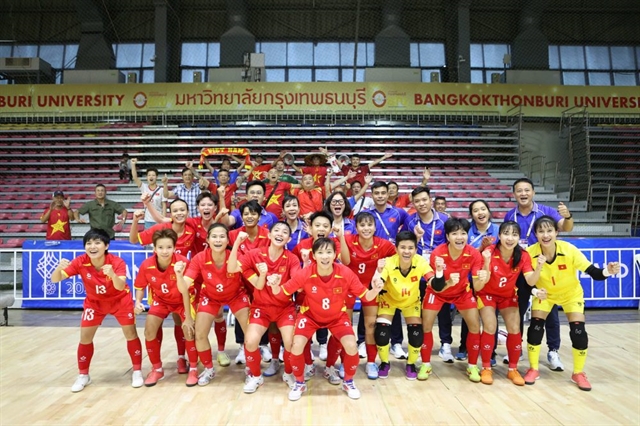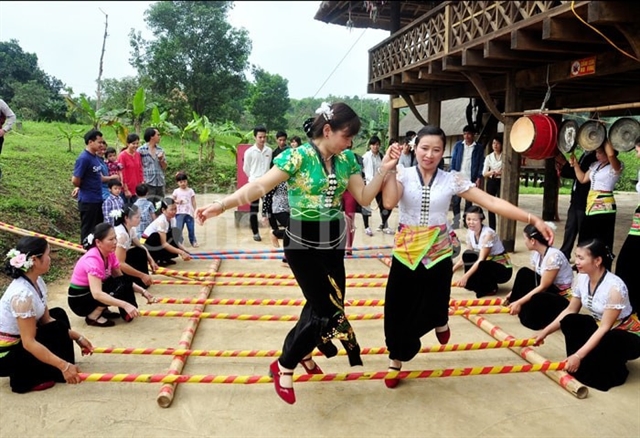 Life & Style
Life & Style

Wherever there are Khmer people, there are pagodas. Sóc Trăng Province in the Mekong Delta area of Việt Nam is such localities, home to 99 Khmer pagodas with different sizes and splendid architectural styles.
By Hồng Minh
Wherever there are Khmer people, there are pagodas. Sóc Trăng Province in the Mekong Delta of Việt Nam is such localities, home to 99 Khmer pagodas with different sizes and splendid architectural styles.
I was fortunate to be accompanied by my local host, Thảo, who has a strong interest in the culture, to do a pagoda-thon, discovering the Buddhism of the Khmer ethnic group in the locality.
Awe-inspiring architecture
We first visited Chùa Dơi (Bats Pagoda), a must-see place for every tourist visiting Sóc Trăng. For the first few seconds, I thought I was visiting a green park, but it turned out to be a feature of the typical design of Khmer pagodas.
According to Thảo, being the most important building in Khmer villages, pagodas are often built on high ground, surrounded by forests of palm trees.
The pagoda is believed to be where earth and heaven meet based on the principles of Theravada Buddhist philosophy and traditional practices, Thảo said.
She also said Chùa Dơi is among the pagoda best known for their harmony between the building and the surroundings and is also a sacred and peaceful shelter for the region's bats.
It seems like the pagodas are built not only for worshipping but also to showcase the extraordinary decorative and artistic skills of the Khmer. This is reflected in the gorgeous patterns, paintings and statues found at the pagodas, especially in the main hall.
In order to show me the best example, Thảo took me to Kh’leang Pagoda, the oldest Khmer pagoda in Sóc Trăng at nearly 500 years old.

|
| A statue at Khleang Pagoda. VNS Photos Hồng Minh |
Typical Theravada Buddhist patterns could be spotted on the outer walls with images of lotus flowers and reincarnation wheels, on the terrace (the divine Naga serpents) and the tops of the pillars (the legendary Krud birds) surrounding the main hall.
The pagoda is known for blending Khmer Buddhism and Vietnamese and Chinese cultures, shown through ancient Chinese characters and distinctive sculptured figures of Vietnamese pagodas in the main hall.
The creativity and aesthetic sense of the Khmer people were once again manifested in Chùa Chén Kiểu (Salon Pagoda), which is my favourite of the bunch.
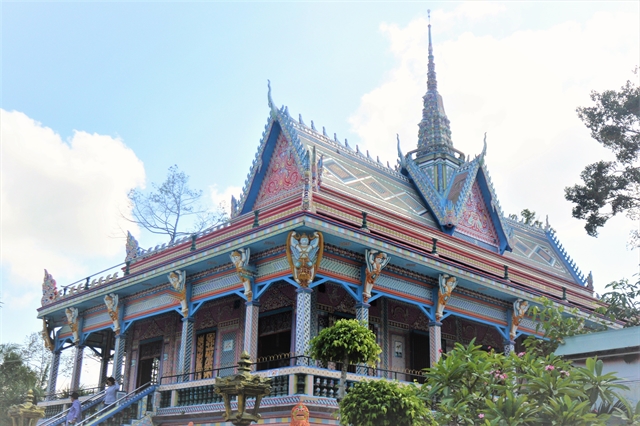
|
| The striking main hall at Chén Kiểu Pagoda. |
Besides common characteristics of Khmer pagodas, Salon Pagoda attracts visitors with its one-of-a-kind architecture. My jaw dropped and my eyes opened wide when I saw the special decorations made from porcelain pieces on the walls, columns and roofs of the pagoda.
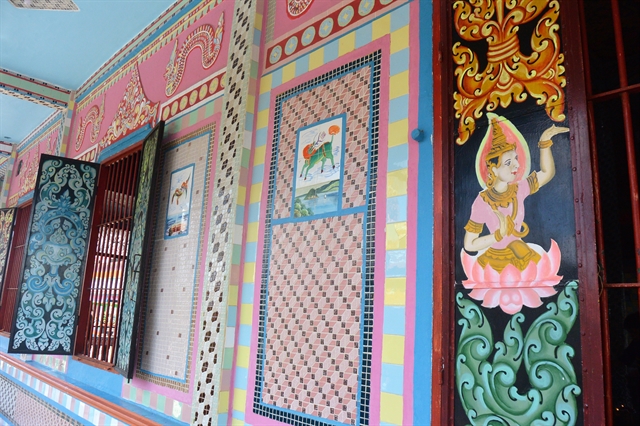
|
| A beautiful painted wall at Chén Kiểu Pagoda. |
Thảo told me Salon Pagoda was built in 1815, then was bombed during the war and underwent restoration in 1969. Due to the restricted budget, monks collected broken ceramic pieces to redecorate the pagoda. That’s why the pagoda was named “Chén Kiểu” (which is literally translated to “Designed Bowl” in English) or Salon inthe Khmer language.
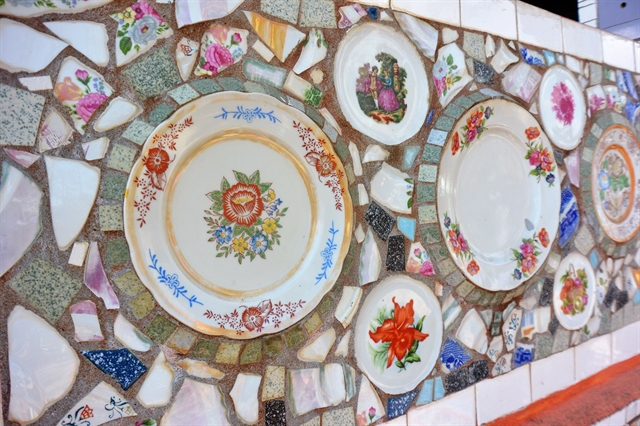
|
| Colourful ceramic wares decorate a wall at Chén Kiểu Pagoda. |
Colourful patterns of ceramic pieces were everywhere, from the main hall’s roof to engraved items such as Hanuman, the Goddess of hawks and lion statues around the temple.
The pagoda looked like a colourful work of embroidery sparkling under the sun. Salon Pagoda and other sacred places in the town display the admirable creativity and elegant aesthetic sense of the Khmer and their wealth of knowledge about Buddhist culture.
Significant social functions
To the Khmer, pagodas are similar to communal houses in northern Việt Nam or long houses in the Central Highlands, but their bond with the local community is even closer.
They are also schools teaching Buddhist principles and the Khmer language to local people. Khmer male youngsters often spend a couple years in the pagodas to be recognised by society. Their first school is the pagoda.
For the Khmer people, practising godliness is the honour and duty of their lives, Thảo said.
Khmer festivals such as Sene Donta, Ok Bom Bok and Chol Chnam Thmay (Khmer New Year) are celebrated at pagodas. Pagodas for the Khmer are sacred places but also very close to their lives. They go to pagodas to ask monks for advice. Pagodas are their second home.
These pagodas have stood the test of time, showing their beauty and supporting the local communities. Visiting Khmer pagodas in Sóc Trăng is not only a serene getaway but also an intriguing way to encounter one of the most unique communities in the heart of the Mekong Delta. VNS



